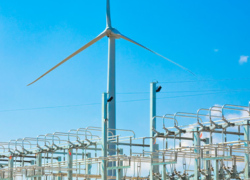China’s Involvement with Latin American Energy
Q: China’s Sky Solar signed a deal to build a $900 million solar energy park in Chile in June while Chinese Premier Wen Jiabao was on a four-country visit to the region. During the trip, Wen also signed energy and other agreements with Argentina, Uruguay and Brazil in addition to announcing that the China Development Bank would create a $10 billion credit line to support infrastructure projects in the region. How has China’s involvement in Latin America’s energy sector evolved? Will it expand beyond the countries and sectors where it has traditionally focused most of its energy investments? If so, where is it likely to go and how will that impact the sector?
A: R. Evan Ellis, associate professor at the Center for Hemispheric Defense Studies in Washington: “The announced China Sky Solar investment is part of a broader effort by China to pursue markets in strategically valued sectors, and to develop associated technologies. These activities are distinct from commonly noted Chinese efforts to secure sources of supply for petroleum and other primary products.With the support of the government of the People’s Republic of China and backing of Chinese financial partners, Chinese companies are pursuing contracts in telecommunications (Huawei, ZTE), computers (Lenovo), space (Great Wall), military (NORINCO, Poly Technologies, CATIC), automotive (Chery, JAC), and heavy equipment sectors (Sany, Zoomlion, XCMG), using real or promised investments which facilitate access to these markets. In electricity generation, China’s flagship SOE State Grid entered the Brazilian market with the $1 billion acquisition of seven transmission facilities in 2010 and a $3.5 billion minority stake in Perenco in 2011. State Grid is a key supplier in the Belo Monte dam project, while Sinohydro, China Water and Electric (CWE) and others are working on loan-backed hydroelectric projects, including Coca Coda Sinclair, Sopladora, and Toachi-Pilaton in Ecuador, Patucha III in Honduras and a project on Colombia’s Magdalena River. In wind power, China Sky Solar is only one of a several small Chinese companies pursuing such initiatives, with announced initiatives by China Goldwind in both Chile and Ecuador. Such initiatives will continue, given the importance of alternative electricity generation as a sector, and Latin America as a market, in the context of slowing growth and financial fragility in China, on top of persistent softness of the U.S. and European markets.”
A: Dani Nedal, research fellow at the University of Birmingham in the United Kingdom: “Chinese companies are slowly becoming relevant players in Latin America’s energy sector, with growing stakes in an increasing array of subsectors. In Brazil, Chinese companies already have significant footholds in oil exploration (and related services and machinery) and electricity distribution, and are looking to diversify into new and clean energy sources such as wind and solar. We can safely expect them to expand into other subsectors and countries, but in dollar terms investment will probably remain heavily concentrated for simple reasons: the structure of the energy industry in Latin America and current growth trends, the costs of entry into these sectors and the high returns they usually yield. Also, other growth sectors might be harder to penetrate due to regulatory barriers, such as Brazilian ethanol, where limits on land purchases might hamper Chinese investment. Chinese capital, in the form of direct investment or lines of credit, should be welcome in cash strapped countries and start-up sectors, but these also tend to bump up against national players and nationalist sentiments.”
A: Margaret Myers, director of the China and Latin America program at the Inter-American Dialogue: “China’s energy engagement in Latin America is overwhelmingly focused on oil, and it is geographically centered on Venezuela, Brazil and Ecuador. From 2005-2010, China negotiated $46.5 billion in oil-backed loans in Latin America, with the vast majority of contracted oil coming from Venezuela. In terms of investment, however, China is increasingly involved in the region’s non-oil energy sectors. China helped to finance and build a natural gas pipeline in Brazil, for example. Scientists at the Beijing-based Brazil-China Center for Climate Change and Renewable Energy are working jointly to develop biofuels. Chinese firm Goldwind has supplied turbines to wind farms in Chile and Ecuador and is pursuing a more coherent Latin America strategy through its subsidiary, Goldwind USA. China also is increasingly involved in the region’s power distribution networks. Chinese firm State Grid purchased electricity transmission networks in Brazil in 2010, for example. A major component of China’s 12th Five-Year Plan (2011-2015) involves the ‘vigorous enforcement’ of energy conservation and diversification. According to the plan, China aims to achieve non-fossil fuel energy consumption of 11.4 percent by 2015, an increase of 1.2 percent over current levels of non-fossil fuel consumption. China is working domestically and internationally to achieve this goal. And energy-related cooperation and investment in Latin America is a part of this effort. China’s 2008 Policy Paper on Latin America lists non-oil energy sectors, and hydropower specifically, as areas in which Chinese firms will invest in coming years. As evidenced by Premier Wen’s recent trip to the region, energy is an area in which both sides are interested in cooperating, and where there is great potential for ‘mutual benefit,’ as the Chinese would say. As global energy challenges intensify, cross-regional cooperation on non-fossil fuel energy production would seem a positive development.”



















